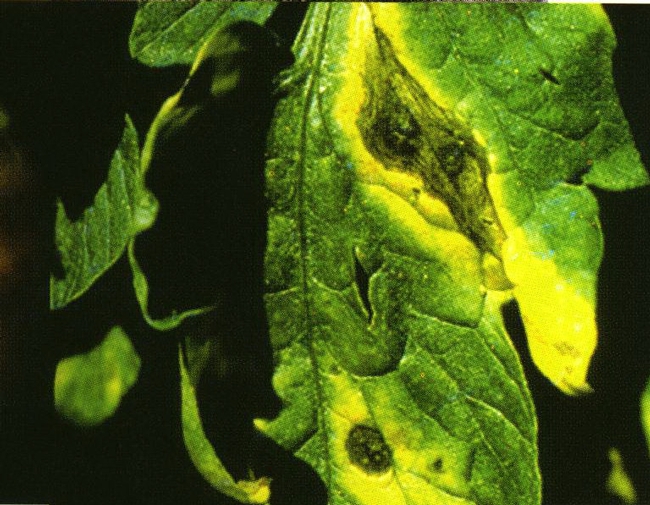- Author: Dustin Blakey
Since the Eastern Sierra is very dry, we don't usually get fungal or bacterial diseases in the garden. Normally viral diseases affect our tomatoes and peppers instead. This year that trend continues. I've already encountered beet curly top virus, tomato spotted wilt virus, and at least one other unidentified virus on tomatoes.
We may be in for a spell of fungal diseases, however.
Due to high temperatures, we've been getting afternoon bouts of elevated humidity and sometimes even rain. This creates excellent conditions for the growth of fungal pathogens.
Who knows what—or if—we'll end up getting in terms of diseases as a result of the recent weather!
Here's what to look for: most of our usually fungal pathogens tend to create leaf spots of some sort. I find that all plants of a variety may be affected and have the same symptoms. It could be all your tomatoes will be affected. :-(
Viruses on the other hand tend to hit individual plants at random without respect to their variety. Growth will look weird, probably stunted, perhaps with weird fruit. There is no treatment for viruses. You need to remove the plant.
There are treatments for fungal pathogens, but it's best to try to avoid diseases altogether. Here are some tips to prevent diseases.
Prevention Tips:
- Water in the morning, not evening
- Prune out suckers on tomatoes to improve airflow
- Remove infected tissues (usually leaves) or dead plants as soon as you see them
- Keep the garden free of weeds to improve airflow
- Check plants often for early symptoms
If you decide to use a fungicide, know that most work to prevent new infections. They don't really cure existing problems.
This page has a list of common tomato diseases and their recommended treatments.




